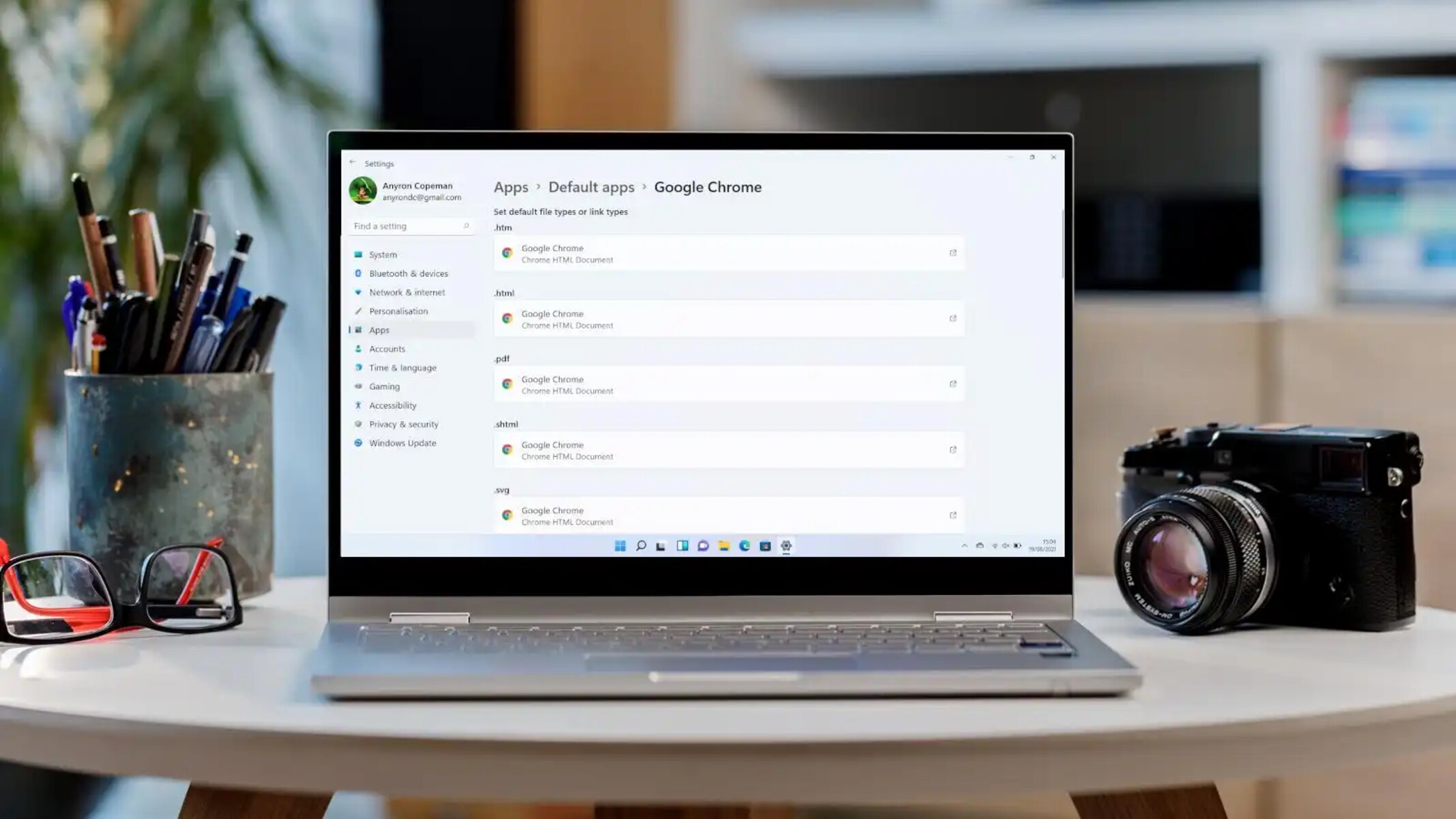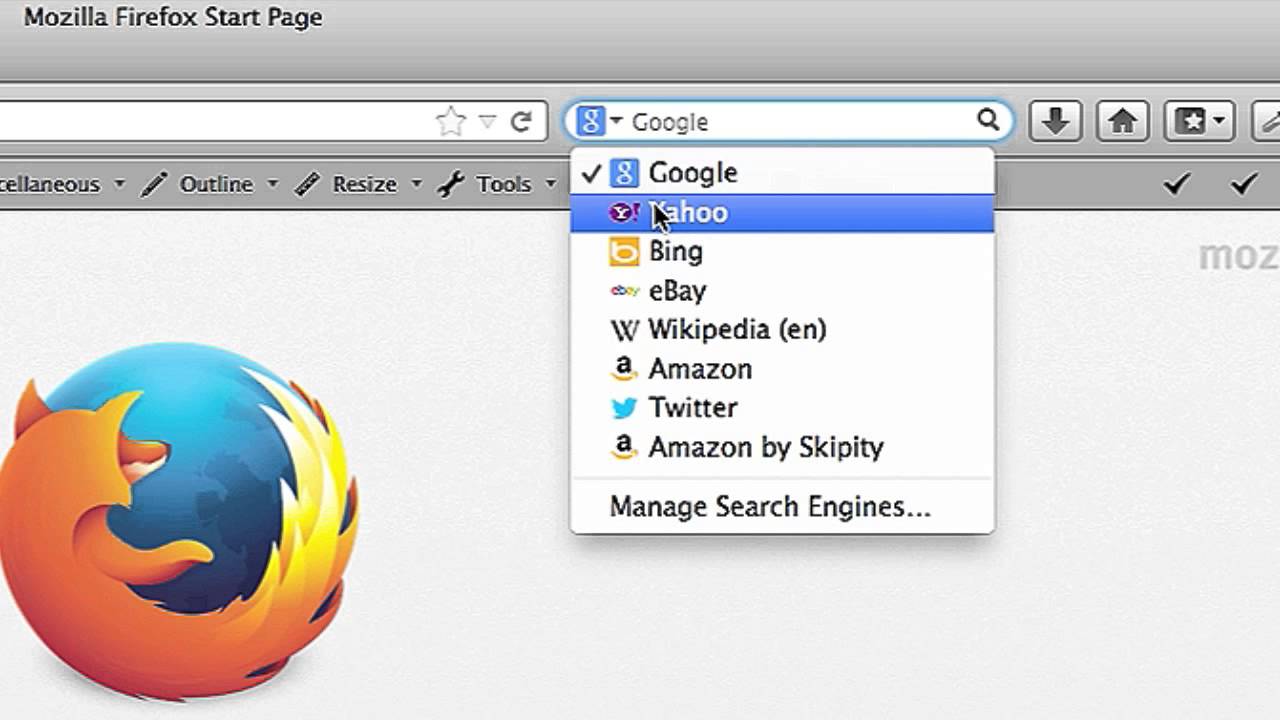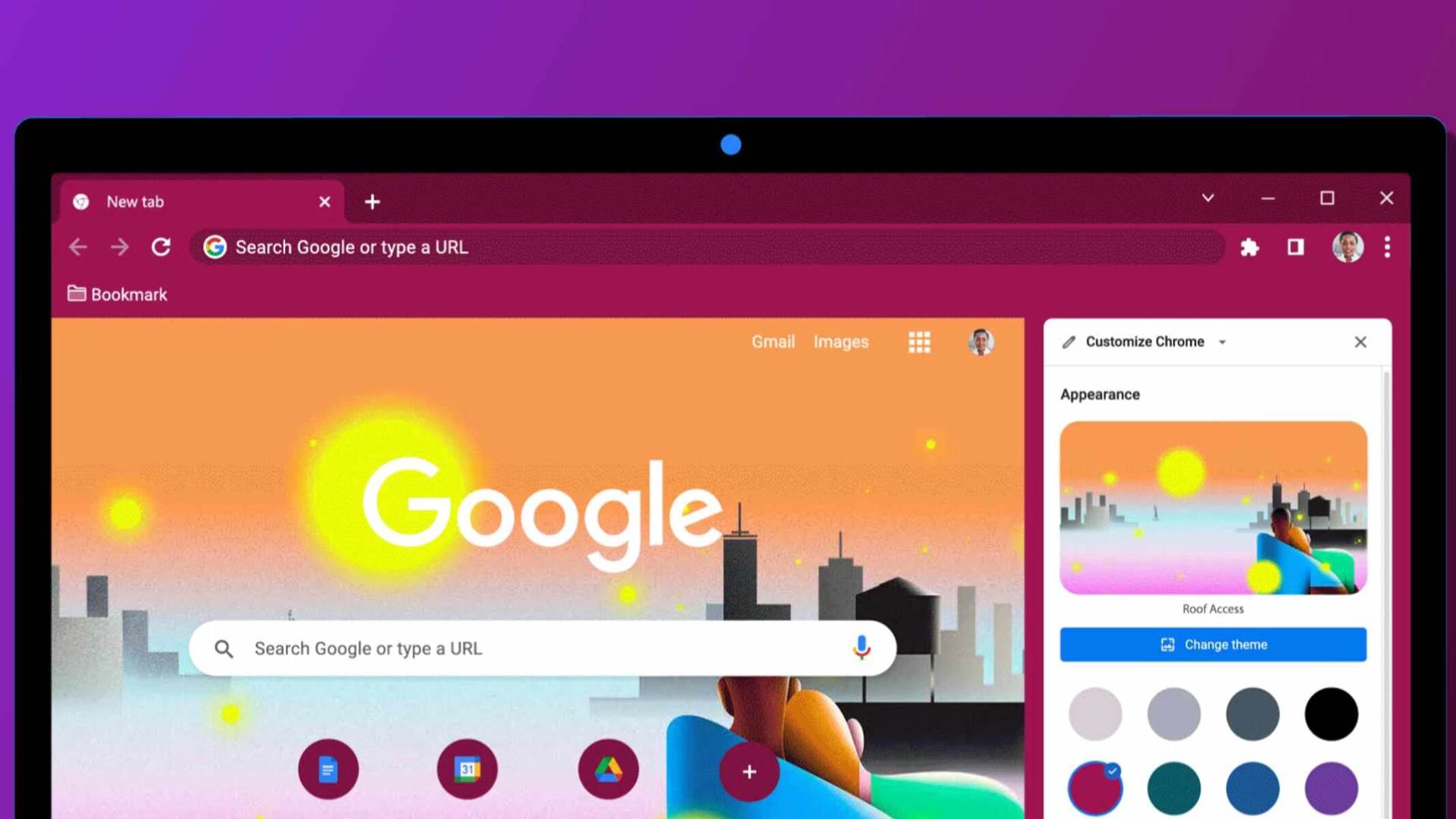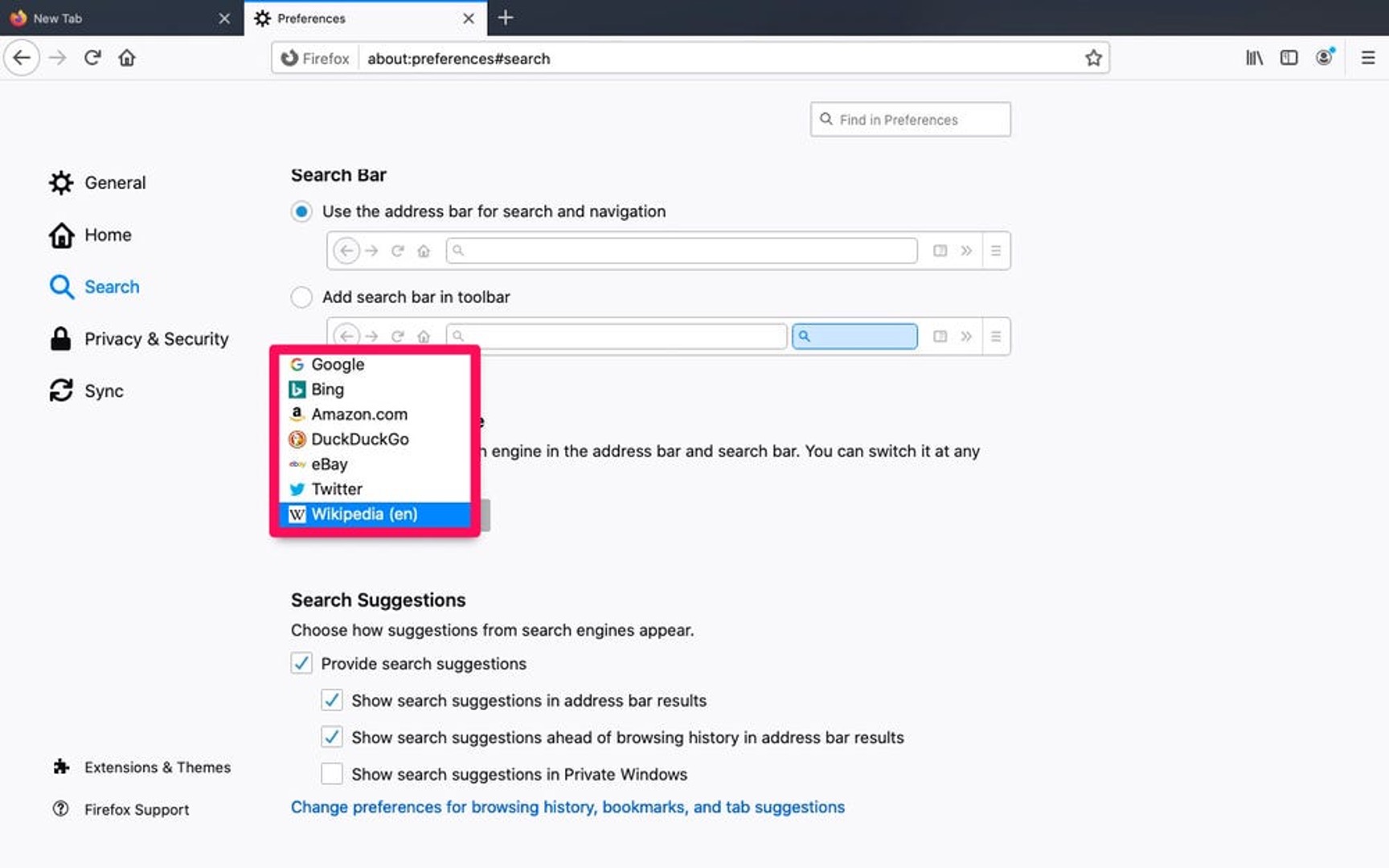Introduction
When it comes to browsing the internet, having a preferred web browser can significantly impact your online experience. Whether you're a fan of the sleek interface of Chrome, the privacy features of Firefox, the seamless integration of Safari, or the customization options of Opera, your choice of browser plays a pivotal role in how you interact with the digital world.
However, there may come a time when you feel the need to switch to a different browser. Perhaps you've heard about a new browser that boasts faster speeds, enhanced security features, or a user-friendly interface. Or maybe you're simply looking to explore a fresh browsing experience. Whatever the reason, changing your preferred browser is a straightforward process that can open up a world of new possibilities for your online activities.
In this guide, we'll walk you through the steps to change your preferred browser. Whether you're transitioning from one popular browser to another or trying out a lesser-known option, this process will empower you to tailor your browsing experience to your preferences and needs. From downloading the new browser to setting it as your default choice, each step is designed to help you seamlessly make the switch and embrace the features and benefits of your new preferred browser.
So, if you're ready to embark on a journey of discovery and optimization, let's dive into the process of changing your preferred browser. By the end of this guide, you'll be equipped with the knowledge and tools to navigate the digital landscape with a fresh perspective and a newfound sense of control over your online browsing experience.
Step 1: Downloading the New Browser
The first step in changing your preferred browser is to download the new browser of your choice. With a plethora of options available, each offering unique features and functionalities, this step presents an exciting opportunity to explore the diverse landscape of web browsers and find one that aligns with your browsing preferences.
To begin, open your current web browser and navigate to the official website of the new browser you wish to download. Whether it's Google Chrome, Mozilla Firefox, Apple Safari, Microsoft Edge, Opera, or any other browser, the official website is the most reliable source for obtaining the latest and secure version of the browser.
Once on the website, locate the download or installation section. This is typically prominently displayed on the homepage or accessible through a dedicated download page. Look for the download button or link that corresponds to your operating system, whether it's Windows, macOS, Linux, or mobile platforms such as iOS and Android.
Click on the download button, and the browser's installation file will begin downloading to your computer or device. Depending on your internet connection speed, the download process may take a few moments to complete. During this time, you can take the opportunity to explore additional information about the browser, such as its key features, security measures, and user reviews, to gain a deeper understanding of what the new browser has to offer.
Once the download is finished, locate the installation file in your computer's downloads folder or the designated location for downloaded files on your device. Double-click on the installation file to initiate the installation process. Follow the on-screen prompts to complete the installation of the new browser, ensuring that you review and agree to any terms and conditions presented during the installation.
Upon successful installation, the new browser will be ready to use, and you can begin exploring its interface, features, and settings. At this point, you have successfully completed the first step in changing your preferred browser, setting the stage for the next step: installing the new browser.
With the new browser now downloaded and installed, you're one step closer to embracing a fresh and tailored browsing experience that aligns with your preferences and needs. The next step will guide you through the process of installing the new browser, bringing you closer to fully integrating it into your digital routine.
Step 2: Installing the New Browser
With the new browser successfully downloaded, the next crucial step is to install it on your computer or device. This process is essential for integrating the new browser into your digital ecosystem and ensuring seamless access to its features and functionalities. By following the installation steps outlined below, you'll be well on your way to experiencing the full potential of your chosen browser.
1. Launch the Installation File
Locate the installation file that you downloaded in the previous step. This file is typically saved in your computer's downloads folder or the designated location for downloaded files on your device. Double-click on the installation file to initiate the installation process. Depending on your operating system, you may be prompted to provide administrative permissions to proceed with the installation.
2. Follow the On-Screen Prompts
Once the installation process is initiated, you'll be presented with a series of on-screen prompts that guide you through the installation. These prompts may include options to customize the installation settings, such as choosing the installation directory or selecting additional components to include. It's important to review each prompt carefully and make selections that align with your preferences.
3. Review and Accept Terms
During the installation process, you may encounter a window displaying the terms and conditions of the browser's usage. It's essential to review these terms to ensure that you understand the rights and responsibilities associated with using the browser. If you agree to the terms, you can proceed with the installation by accepting the terms and clicking the appropriate button to continue.
4. Wait for the Installation to Complete
As the installation progresses, the browser's files and components will be copied to the designated installation directory on your computer or device. Depending on the speed of your system, the installation process may take a few moments to complete. It's important to allow the installation to finish without interrupting the process to ensure that the browser is installed correctly.
5. Desktop and Start Menu Shortcuts
Once the installation is complete, you may be given the option to create shortcuts for the new browser on your desktop and in the Start menu (for Windows users). These shortcuts provide convenient access to the browser, allowing you to launch it with a single click. You can choose to create these shortcuts based on your preference for accessing the browser.
6. Launch the New Browser
After the installation process concludes, the new browser is ready to use. You can launch the browser by clicking on the desktop shortcut, accessing it from the Start menu, or locating it in the applications folder on your device. Upon launching the browser for the first time, you'll have the opportunity to customize its settings and explore its features to tailor the browsing experience to your liking.
By following these installation steps, you've successfully integrated the new browser into your digital environment, setting the stage for the final step: setting the new browser as your default choice. With the installation complete, you're now poised to fully immerse yourself in the unique offerings of your chosen browser and make it your preferred gateway to the online world.
Step 3: Setting the New Browser as Default
Setting the new browser as the default option ensures that it becomes the primary application for accessing web content, handling links, and opening various file types associated with web browsing. By designating the new browser as the default, you streamline your digital experience, allowing seamless access to online resources and a consistent browsing environment. The following steps will guide you through the process of setting the new browser as your default choice, empowering you to fully embrace its features and capabilities.
1. Access Browser Settings
Begin by launching the newly installed browser. Once the browser is open, navigate to its settings or preferences menu. This can typically be found by clicking on the browser's menu icon, often represented by three horizontal lines or dots, and selecting the "Settings" or "Preferences" option from the dropdown menu. Alternatively, you can access the settings by typing "chrome://settings" (for Chrome), "about:preferences" (for Firefox), or the corresponding URL for your specific browser into the address bar and pressing Enter.
2. Locate Default Browser Settings
Within the browser settings, look for the section related to default browser settings. This section may be labeled as "Default Browser," "Set as Default," or something similar, depending on the browser you're using. Once you've located the default browser settings, click on this option to access the relevant preferences.
3. Set as Default Browser
In the default browser settings, you'll typically find an option to set the browser as the default choice for web browsing and handling links. Click on this option to initiate the process of designating the new browser as the default application for web-related activities. Depending on your operating system, you may be prompted to confirm this action before the changes take effect.
4. Confirm Default Browser Status
After selecting the option to set the new browser as the default, confirm that the changes have been successfully applied. This may involve checking system settings or preferences to ensure that the new browser is now recognized as the default choice for web browsing and related activities. Once confirmed, you can proceed with confidence, knowing that the new browser is seamlessly integrated into your digital environment.
By following these steps, you've successfully set the new browser as your default choice, solidifying its position as the primary gateway to the online world. With the new browser now established as your default option, you can enjoy a cohesive and tailored browsing experience that aligns with your preferences and enhances your digital interactions.
Conclusion
Congratulations on successfully changing your preferred browser! By following the steps outlined in this guide, you've embarked on a journey of exploration and optimization, empowering yourself to tailor your online browsing experience to your preferences and needs. As you reflect on the process you've completed, it's important to recognize the significance of this transition and the potential impact it can have on your digital interactions.
By downloading, installing, and setting the new browser as your default choice, you've embraced a new era of browsing that aligns with your evolving preferences and priorities. The act of changing your preferred browser is not merely a technical adjustment; it's a deliberate choice to seek out enhanced features, improved performance, and a more personalized approach to navigating the digital landscape.
As you begin using your new preferred browser, take the time to familiarize yourself with its interface, settings, and unique capabilities. Explore the range of extensions, themes, and customization options available, allowing you to tailor the browser to your specific tastes and requirements. Whether it's streamlined tab management, advanced privacy features, or seamless integration with productivity tools, your new browser holds the potential to elevate your online experience in ways that resonate with you.
Furthermore, consider the broader implications of your browser choice, particularly in relation to security, privacy, and accessibility. Many modern browsers offer robust security features, privacy controls, and accessibility options that can enhance your online safety and inclusivity. By leveraging these features, you're not only optimizing your individual browsing experience but also contributing to a safer and more inclusive online environment for all users.
In essence, changing your preferred browser is an opportunity to take control of your digital journey, aligning your online activities with your values and aspirations. It's a statement of empowerment, signaling your willingness to seek out the best tools and resources to support your digital lifestyle. As you navigate the web with your new preferred browser, embrace the sense of agency and possibility that comes with this transition, knowing that you've taken a proactive step toward a more tailored and enriching online experience.
So, as you embark on this new chapter of browsing with your preferred browser, may it serve as a gateway to discovery, productivity, and enjoyment. Embrace the features, explore the possibilities, and make the most of this personalized digital companion that reflects your unique browsing preferences. With your new preferred browser at the helm, you're poised to navigate the digital landscape with confidence and purpose, knowing that you've made a deliberate choice to optimize your online interactions.
In closing, remember that the world of web browsers is dynamic and ever-evolving, with new features and innovations constantly emerging. Stay curious, stay informed, and remain open to exploring new browser options in the future, knowing that the power to shape your digital experience is firmly within your grasp. Here's to a seamless and rewarding journey with your new preferred browser!

























